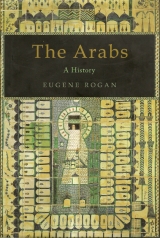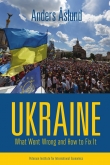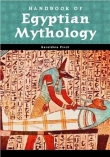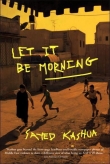
Текст книги "The Arabs: A History"
Автор книги: Eugene Rogan
Жанры:
Военная история
,сообщить о нарушении
Текущая страница: 30 (всего у книги 47 страниц)
The founders of the Palestinian armed struggle first met in Cairo in the early 1950s. A Palestinian engineering student named Yasser Arafat (1929–2004), a veteran of the 1948 war, was elected president of the Palestinian Student Union in Cairo in 1952. He used the position to motivate a generation of young Palestinians to dedicate their lives to the liberation of their homeland. One of Arafat’s closest collaborators was Salah Khalaf, who came to be known by his nom de guerre, Abu Iyad. During the Arab-Israeli War of 1948, the fifteen-year-old Khalaf had been forced to leave his hometown of Jaffa for Gaza. He went on to study in Cairo at the teacher training college Dar al-’Ulum, where he met Arafat at a meeting of the Palestinian Student Union in the autumn of 1951. “He was four years older than myself,” Khalaf recalled, “and I was immediately taken by his energy, enthusiasm, and enterprising spirit.” Khalaf and Arafat were united by their mistrust of the Arab regimes in the aftermath of the 1948 disaster, though with the advent of Nasser and the Free Officers, Khalaf recalled, “Everything seemed possible, even the liberation of Palestine.”36 Revolutionary Egypt proved a difficult place for Palestinian politics. Though Nasser promised the restoration of Palestinian national rights, his government kept Palestinian nationalist activity under tight controls. Over the ensuing years, the Palestinian students fanned out across the Arab world, establishing footholds in various nations that would eventually become organized cells. Arafat moved to Kuwait in 1957, where Khalaf joined him two years later. Others, like Mahmud Abbas, the current president of the Palestinian Authority, found jobs in Qatar. The well-educated Palestinians were successful in their new jobs and channeled their resources toward their national cause?the liberation of Palestine. The Palestinians only began to create distinct political organs in the late 1950s. In October 1959, Arafat and Khalaf convened a series of meetings with twenty other Palestinian activists in Kuwait to establish Fatah. The organization’s name was doubly significant. It is both the Arabic word for “conquest” and a reverse acronym for Harakat Tahrir Filastin—the Palestine Liberation Movement. The movement advocated armed struggle to transcend factionalism and achieve Palestinian national rights, and it would aggressively recruit and organize new members over the ensuing five years. Fatah began to publish a magazine—Filastinuna, or “Our Palestine”—to circulate its views. Its editor, Khalil al-Wazir (Abu Jihad), would emerge as Fatah’s official spokesman. The Arab states decided to create an official organ to represent Palestinian aspirations. In 1964 the first summit of Arab leaders met in Cairo and called for a new organization to enable the Palestinian people “to play their role in the liberation of their country and their self determination.” Arafat and his colleagues had grave misgivings about the new organ, dubbed the Palestine Liberation Organization (PLO). The Palestinians had not been consulted in the establishment of their own liberation organization, and Nasser had imposed a lawyer named Ahmad Shuqayri to head the PLO. Shuqayri’s Palestinian credentials were slim at best. Born in Lebanon of mixed Egyptian, Hijazi, and Turkish descent, the eloquent Shuqayri had served until 1963 as the Saudi representative to the United Nations. Arafat and the Fatah activists were convinced that the PLO had been created by the Arab regimes to control the Palestinians rather than to involve them in the liberation of their homeland. At first, Fatah tried to cooperate with the PLO. Arafat and Khalaf met with Shuqayri when he visited Kuwait, and they sent delegates to the first Palestinian National Congress, convened in Jerusalem in May 1964. The PLO was formally established at the Jerusalem Congress. The 422 invited delegates, drawn mostly from elite families, reconstituted themselves as the Palestinian National Council, a sort of parliament in exile, and ratified a set of objectives enshrined in the Palestinian National Charter. The new organization even called for the creation of a Palestinian national army, which would come to be called the Palestine Liberation Army. Fatah was marginalized at the congress and left Jerusalem determined to upstage the new official Palestinian organ. To seize the initiative, Fatah decided to launch an armed struggle against Israel. Fatah’s first operation against Israel was a military failure but a propaganda success. Three commando teams were scheduled to attack Israel from Gaza, Jordan, and Lebanon on December 31, 1964. However, the governments of Egypt, Lebanon, and Jordan were keen to prevent the Palestinians from antagonizing the Israelis, knowing they would face severe reprisals against their own territory. The Egyptian authorities apprehended the Fatah squad in Gaza one week before the operation was due to take place. Lebanese security forces arrested the second group before they reached the Lebanese frontier with Israel. A third team crossed into Israel from the West Bank on January 3, 1965, and left dynamite charges in an irrigation pumping station, though the Israelis found the explosives and disarmed them before they could go off. As the Palestinian commandos returned to Jordanian territory, they were arrested by Jordanian authorities and one guerrilla was killed resisting arrest. Fatah had its first martyr, though tellingly he was killed by fellow Arabs. The symbolism of the ultimately unsuccessful attacks was far more significant than Fatah’s military objectives. On New Year’s Day 1965, Fatah issued a military communiquй under an assumed name—al-Asifa, or “the Storm”—claiming “our revolutionary vanguards burst out, believing in the armed revolution as the way to Return and to Liberty, in order to stress to the colonialists and their henchmen, and to world Zionism and its financers, that the Palestinian people remains in the field; that it has not died and will not die.”37 Palestinians around the world were electrified by the news. “On January 1, 1965, Fatah opened a new era in modern Palestinian history,” wrote Leila Khaled, a soldier of the armed struggle whose family had been driven from Haifa in 1948. To her, the attacks represented the beginning of the Palestinian revolution and the first step toward the liberation of her homeland. “The Palestinian people had spent seventeen years in exile living on hopes fostered by the Arab leadership. In 1965 they decided they must liberate themselves rather than wait for God’s help.”38 In its first eighteen months, the Palestinian armed struggle remained a marginal movement easily contained by Israel and its Arab neighbors. Salah Khalaf claimed Fatah carried out “about 200 raids” between January 1965 and June 1967, though he acknowledged such attacks were “limited in scope and not the sort that could endanger Israeli state security or stability.” The Arab defeat in 1967 was, ironically, a moment of liberation for the Palestinian armed struggle. With Gaza and the West Bank now under Israeli occupation rather than under Egyptian and Jordanian rule, as they had been between 1948 and 1967, the Palestinian movement could claim to speak on behalf of Palestinians in the occupied territories for the first time. Moreover, the Palestinian movement gained its freedom from the defeated Arab states. Nasser and the other Arab leaders had imposed stringent restrictions on Fatah and the other Palestinian factions. The chastened Nasser could no longer stand in the way of the Palestinian movement but used his diminished authority to pressure the other Arab states bordering Israel to allow the Palestinians to launch attacks from their territory. Jordan became the primary center of Palestinian operations in the immediate aftermath of the Six Day War. Weakened by the destruction of his armed forces and the loss of the West Bank, King Hussein turned a blind eye to Fatah operations against Israel. The armed Palestinian factions set up their headquarters in the Jordan Valley, in the village of Karamah. The Israelis took note of Fatah?s preparations. In March 1968, Fatah was warned by Jordanian authorities of an imminent Israeli strike on its base in Karamah. The Palestinians decided to hold their ground and make a stand rather than retreat before superior Israeli forces. The Jordanians agreed to provide artillery support from the highlands overlooking the Jordan Valley. On March 21 a major Israeli expedition force crossed the Jordan River in an attempt to destroy Fatah’s headquarters. Some 15,000 Israeli infantry and armor attacked both the village of Karamah and the Fatah training camps. Mahmoud Issa, a 1948 refugee from Acre, was there. “We were given orders not to intervene through the first part of the operation,” Issa recalled. “Abu Amar [Yasser Arafat’s nom de guerre] came in person to explain that we could only survive such a desperate situation by ruse. He had no difficulty in convincing us. We were materially incapable of defending Karamah.” Indeed, it is now estimated that there were only 250 Fatah guerrillas and administrative staff, and perhaps 80 members of the Palestine Liberation Army, based at Karamah at the time. “Our only option,” Issa continued, “was to ambush the Israelis, and to choose the right moment to do so.”39 Issa and his comrades took up positions outside the camp to strike their counterattack at sunset. “The day wore on,” Issa related in his memoirs. “There was nothing left of Karamah. Only ruins. Many women, men and children had been taken prisoner. There were also many dead.” After completing their mission under heavy Jordanian artillery fire, the Israelis began their withdrawal. It was the moment for which Issa and his comrades had been waiting. The moment the tanks passed our positions, the signal was given for us to attack. It was a great relief for me and my comrades. It was as though we had held our breath for too long. We ran straight ahead and wanted to run faster yet. We could imagine the surprise of the Israelis, seeing commandos they believed buried under the rubble now racing towards them. The light failed. The bridges over the Jordan had been blown. The tanks were stopped in their tracks, and with the help of [Jordanian] artillery cover, a new battle took place.
The Palestinians disabled a number of Israeli vehicles with rifle-propelled grenades and inflicted a number of casualties with small arms before the Israelis completed their withdrawal across the Jordan. For the Palestinians, Karamah was a victory of survival against superior forces and a moment of dignity (significantly, the word karama means “dignity” or “respect” in Arabic) when the Israelis were forced to withdraw under fire. Dignity came at a high price, however. Though inflated casualty figures were reported in the Arab press, at least 28 Israelis, 61 Jordanians, and 116 Palestinian fighters were killed in action.40 Yet the battle of Karamah was treated as an outright Palestinian victory across the Arab world. For the first time since 1948, an Arab army had stood up to the Israelis and shown that the enemy was not invincible. Fatah was the prime beneficiary of the battle. As Leila Khaled recalled with some critical detachment, “Arab news media inflated the incident to make it appear as if the liberation of Palestine was just around the corner. Thousands of volunteers poured in; gold was collected in kilos, arms came by the ton. Fatah, a movement of a few hundred semi-trained guerrillas, suddenly appeared to the Arabs like the Chinese liberation army on the eve of October, 1949. Even King Hussein declared that he was a commando!”41 Salah Khalaf, one of Fatah’s founders, claimed that their offices were flooded with volunteers—some 5,000 in the first forty-eight hours following the battle. And Fatah operations expanded accordingly: 55 operations in 1968 grew to 199 operations in 1969 and peaked at 279 operations against Israel in the first eight months of 1970.42
Public support for the Palestinian armed struggle, and Fatah in particular, masked the factionalism and deep political rifts that fragmented the Palestinian national movement. Differences in ideology gave rise to a variety of tactics that would lead the Palestinian armed struggle from guerrilla warfare to terrorism. The PLO underwent a major transformation in the aftermath of the 1967 war. Ahmad Shuqayri, who had never succeeded in establishing his leadership over the broader Palestinian movement, tendered his resignation as chairman of the PLO in December 1967. Though Arafat’s Fatah movement was in a strong position to take over the PLO, its followers chose instead to preserve the organization as a front for all Palestinian factions. Yet Fatah emerged as the dominant party under the PLO’s umbrella, and in February 1969 Yasser Arafat was elected chairman of the PLO, a title he would hold until his death in 2004. Not all Palestinian groups accepted Fatah’s leadership. The Popular Front for the Liberation of Palestine (PFLP), headed by medical doctor George Habash (1926–2008), had deep ideological differences with Fatah. The PFLP believed that according to the Chinese and Vietnamese models, the armed struggle for national liberation could only occur after a social revolution; Fatah, in contrast, put the struggle for national liberation first. The PFLP leader was dismissive of Fatah, believing the rival organization ideologically bankrupt and tainted by association with Arab governments he deemed corrupt. When Fatah took control of the PLO, the Popular Front leadership decided to follow their own path to the Palestinian revolution and to raise international awareness of the Palestinian cause. They left Fatah to pursue the armed struggle through guerrilla raids in Israeli territory—a strategy that looked increasingly quixotic given the high casualties the Palestinians suffered (1,350 guerrillas killed and 2,800 taken prisoner by the end of 1969, according to Israeli records).43 The Popular Front opted instead for high-profile operations against Israeli and U.S. targets abroad designed to raise international awareness of the Palestinian issue. The Popular Front was the first Palestinian organization to engage in air piracy. In July 1968, three PFLP commandos hijacked a passenger jet of the Israeli national carrier, El Al, and ordered the pilot to land the plane in Algiers. The hijackers released all the passengers unharmed, preferring to hold a press conference rather than hostages. In December 1968, Mahmoud Issa, the veteran of Karamah, evacuated and sabotaged another El Al plane in Athens. He had been instructed by his superiors to surrender to the Greek authorities, in the expectation that his trial would generate wide press interest and serve as a platform to put the Palestinian cause to a global audience. Issa carried out his mission to the letter, seizing and evacuating the plane before detonating grenades in the empty aircraft and surrendering to the puzzled Greek authorities. The Israelis responded to Palestinian attacks on their airliners by bombing the Beirut International Airport, where they destroyed thirteen Boeing aircraft of the Lebanese national carrier Middle East Airlines. “We thanked the Israelis for enlisting Lebanese support for the [Palestinian] revolution,” Leila Khaled remarked ironically, “and admired their audacity in blowing up planes that were seventy to eighty percent American owned!”44 The PFLP believed its strategy was producing results and that it had focused international attention on the Palestinian cause. “The world was at last forced to take notice of Palestinian actions. The Arab press couldn’t ignore them, nor could the Zionists conceal them,” Khaled concluded.45 In the international press, however, the Palestinians were gaining a reputation for terrorism that would undermine the legitimacy of their movement in Western public opinion. As in the Algerian revolution, women played an important role in the Palestinian armed struggle. Amina Dhahbour became the first Palestinian woman to take part in a hijacking operation when she commandeered an El Al jet in Zurich in February 1969. Dhahbour’s involvement was an inspiration for women in the movement. Leila Khaled heard the news on the BBC World Service and immediately told her women comrades. “Within a few minutes we were all celebrating the liberation of Palestine and the liberation of women,” she recalled.46 Khaled, who had recently joined the Popular Front, volunteered for the Special Operations Squad and was sent to Amman for training. In August 1969, Khaled was given her first mission. “Leila,” her superiors told her, “you are going to hijack a TWA plane.” She was thrilled by the assignment, which she saw as a mission against American imperialism.47 She was firmly convinced that the strategy of hijacking Israeli and American aircraft advanced the strategic objectives of the movement to liberate Palestine. ?Generally,? Khaled wrote, ?we act not with a view to crippling the enemy?because we lack the power to do so?but with a view to disseminating revolutionary propaganda, sowing terror in the heart of the enemy, mobilising our masses, making our cause international, rallying the forces of progress on our side, and underscoring our grievances before an unresponsive Zionist-inspired and Zionist informed Western public opinion.?48 The hijacking of the TWA plane was timed to coincide with an address by President Richard Nixon to the annual meeting of the Zionist Organization of America in Los Angeles, California, on August 29, 1969. Given the extensive security measures applied by airports today, it seems incredible how easily Leila Khaled and her associate smuggled pistols and hand grenades onto TWA Flight 840 in Rome’s Fiumicino Airport. Shortly after takeoff, her accomplice forced his way onto the flight deck and announced the plane was under a “new captain.” Leila then assumed command of the aircraft. “To demonstrate my credibility, I immediately offered [the pilot] Captain Carter the safety pin from the grenade as a souvenir. He respectfully declined it. I dropped it at his feet and made my speech. ‘If you obey my orders, all will be well; if not, you will be responsible for the safety of passengers and aircraft.’”49 Once she had secured control over the plane, Khaled enjoyed her command enormously. She ordered the pilot to fly to Israel. She communicated directly with air traffic controllers en route, and particularly relished forcing the Israeli authorities to address the aircraft not as “TWA Flight 840” but as “Popular Front, Free Arab Palestine.” She had the pilot circle over her native city, Haifa, which she saw for the first time since 1948, shadowed by three Israeli fighters. Finally, she instructed the pilot to land in Damascus, where all of the passengers were ultimately released unharmed. Leila and her associate were held under house arrest by the Syrian authorities for forty-five days before they were allowed to return to Lebanon. They had enjoyed complete success in their mission and escaped with impunity.
The late 1960s were the heyday of the Palestinian commando movement. Fatah’s operations in Israel and the Popular Front’s hijackings brought the Palestinian cause to the world’s attention and gave hope to exiled Palestinians the world over. However, relations between the Arab host states and the Palestinian revolution soon began to deteriorate. The tensions were most pronounced in Lebanon and Jordan. Palestinian guerrillas enjoyed significant public support in Lebanon, particularly among Leftist and Muslim groups disenchanted with the conservative Maronite-dominated political order. The Lebanese government, however, saw the Palestinian movement as a direct threat to its sovereignty and a risk to the country’s security. When Israeli commandos attacked Beirut Airport in 1968, the Lebanese authorities attempted to crack down on the Palestinians. Clashes erupted between the Lebanese security forces and Palestinian guerrillas in the course of 1969. Egyptian president Nasser intervened to broker a deal between the Lebanese government and the Palestinian factions. The Cairo Accord of November 1969 set the ground rules for the conduct of the Palestinian movement in Lebanese territory. It permitted Palestinian guerrillas to operate from Lebanese territory and gave the Palestinian factions full control over the 300,000 Palestinians living in refugee camps in Lebanon. The Cairo Accord provided a tenuous truce between the Lebanese government and the Palestinian movement that would be stretched to the breaking point over the next six years. Relations with the Kingdom of Jordan were even more volatile. Some of the Palestinian factions openly called for the overthrow of the “reactionary” Hashemite monarchy to mobilize Palestinian and Arab masses through social revolution, which they saw as the necessary first step for the liberation of Palestine. Salah Khalaf acknowledged that the guerrillas were in part to blame for the breakdown in relations. “It’s true that our own behaviour wasn’t terribly consistent,” he wrote. “Proud of their force and exploits, the fedayeen [Palestinian commandos] often displayed a sense of superiority, sometimes even arrogance, without taking into consideration the sensibilities or interests of the native Jordanians. Still more serious was their attitude toward the Jordanian army, which they treated more as an enemy than as a potential ally.”50 But all the Palestinian factions believed King Hussein behaved duplicitously toward them and that he had thrown in his lot with the Americans and even the Israelis against the Palestinian cause. By 1970 the Jordanians and the Palestinians were on a collision course. In June, the Popular Front took the first secretary of the American Embassy in Jordan hostage and seized the two largest hotels in Amman—the Intercontinental and the Philadelphia, taking more than eighty guests as hostages. King Hussein responded by sending his army to attack Palestinian positions in the refugee camps of Amman. The fighting raged for a week before a truce was struck and all the hostages were released. Leila Khaled regretted that the Popular Front had not continued fighting. “We missed the opportunity to depose Hussein when we had the confidence of the people and the power to defeat his fragmented forces,” she later reflected.51 The Popular Front struck again in September 1970 when it hijacked another plane to Athens and demanded the release of Mahmoud Issa. Since his own attack on an El Al passenger plane in Athens in December 1968, Issa had been held in a squalid Greek jail cell, forgotten by the outside world. The show trial he had hoped for in Greece, to focus international attention on the Palestinian cause, never materialized. As a result of its bold and successful hijacking, the PFLP was able to seize headlines and forced the Greek government to release Issa. Mahmoud Issa returned to Jordan to a hero’s welcome, and within two months he had his next assignment. He was to prepare a landing strip for a spectacular PFLP operation?a synchronized three-plane hijacking that would bring Israeli and Western aircraft to the deserts of Jordan. The Popular Front hoped by these means to secure the front pages of the world?s press and to assert the authority of the Palestinian revolution over Jordan. It was a deliberate provocation, a challenge to both King Hussein and his army. Issa went to work on a disused airstrip to the east of the Jordanian capital Amman known as Dawson?s Field, renamed for the occasion ?Revolution Airport.? On September 6, 1970, commandos of the Popular Front boarded an American TWA airliner en route from Frankfurt to New York, and a Swissair flight from Zurich to New York, and forced both planes to land in Jordan. The PFLP also assigned four commandos to seize an Israeli passenger plane that same day. The El Al ground staff refused boarding passes to two of the would-be hijackers, who chose to hijack an American Pan Am airliner instead. The Pan Am pilot refused to land his aircraft at Dawson’s Field, claiming the runway was not long enough to accommodate his massive Boeing 747 aircraft. He flew to Beirut, where Popular Front explosive teams wired the first-class cabin, and then directed the plane on to Cairo. The hijackers told the passengers and crew they would have only eight minutes to evacuate the aircraft once the plane landed. In fact, the explosives went off only three minutes after the plane touched down. Remarkably, all 175 passengers and crew managed to get off safely before the aircraft exploded. The other two PFLP operatives succeeded in boarding the El Al flight from Amsterdam to New York. In command was Leila Khaled, the hijacker of TWA 840. Having suffered a string of attacks since 1968, El Al had intensified its security measures: cockpit doors had been reinforced, and air marshals were now posted on all flights. Shortly after takeoff, Leila and her comrade attempted to seize control of the aircraft. They met with determined resistance from the Israeli air marshals and crew. Some fourteen shots were fired, leaving an Israeli steward critically wounded and hijacker Patrick Arguello dead (Leila Khaled claimed he was summarily executed on the plane). Khaled was overpowered and disarmed. The pilot made an emergency landing in London to evacuate the wounded steward. The British authorities took the dying Arguello off the plane and arrested Leila Khaled. The Popular Front was quick to respond, hijacking a British BOAC airliner in Bahrain on September 9, where it joined the Swissair and TWA aircraft in Jordan’s “Revolution Airport.” The multiple hijackings, combined with the destruction of the Pan Am aircraft in Cairo, captivated the international media. In terms of air piracy, the events of September 1970 would not be surpassed until September 2001. With three aircraft in Jordan still under its control, the PFLP began to make its demands: the release of Leila Khaled, three guerrillas held in West Germany, three other guerrillas held in Switzerland, and an unspecified number of Palestinians held by Israel. If its demands were not met within three days, all hijacked aircraft—which held a total 310 passengers and crew?would be destroyed. In fact, the Popular Front was still loath to alienate international public opinion by killing hostages, and it began to release women and children. Accounts of the hostages? experiences dominated the front pages of the world?s press. On September 12, the remaining passengers were taken from the aircraft by armed PFLP guards and held hostage in a hotel commandeered by the Popular Front in central Amman. Charges were laid in the empty aircraft, which were destroyed in a series of spectacular explosions, captured by the television cameras of the world press. A bigger explosion would follow five days later, when the Jordanian army declared war on the Palestinian revolution. For King Hussein and his army, the Palestinian factions had outstayed their welcome. The euphoria of Karamah had given way to Black September (as the war to drive the Palestinian revolution from Jordanian soil came to be called). The Popular Front had made no attempt to hide its wish to overthrow the monarchy and turn Jordan into the launching pad for the liberation of Palestine, and its decision to stage its hijacking outrage on Jordanian soil was the final straw. Fatah denounced the actions of the Popular Front, but the Jordanians no longer drew distinctions between Palestinian factions. There was not room for both the Palestinian revolution and the Hashemite monarchy in Jordan. Both King Hussein and his army were outraged by the PFLP’s audacity in seizing Jordanian territory for its terror operations. When segments of Jordan’s army attempted to intervene in the hijackings at Dawson’s Field, the Palestinian guerrillas countered with threats to the hostages. The Jordanian soldiers withdrew and held their fire, waiting for the hostage crisis to be resolved before taking action. This inaction in the face of Palestinian threats seemed to strip the Jordanian soldiers of their sense of manhood, taking them to the verge of mutiny against their monarch. One anecdote that gained wide circulation at the time was that when King Hussein reviewed his armored units, they flew women’s lingerie from their antennae in protest. “It’s we who are the women now,” a tank commander told his monarch.52 On September 17, Hussein ordered his army into action. Black September was all-out war. For ten days Palestinian guerrillas fought the Jordanian army in a conflict that threatened to broaden into a regional conflagration. As head of a conservative monarchy in a divided Middle East, Hussein came under threat by his “progressive” Arab neighbors who wished to intervene on behalf of the Palestinians. Hussein faced a serious threat from Iraqi troops that had been posted to Jordan since the Six Day War, and an actual invasion of his northern provinces by Syrian tanks flying the colors of the Palestine Liberation Army. With his army overstretched by what was now a two-front war—against the Palestinians and the invading Syrians—Hussein invoked his friendship with the United States and Britain and even sought Israeli assistance to protect Jordanian airspace from outside attack. Western intervention, however, risked provoking a Soviet response in defense of its own regional allies. Nasser called on the other Arab states to broker a resolution to the conflict before it spiraled out of control. It took Nasser’s authority to bring Arafat and Hussein together in Cairo on September 28 to resolve their differences. In a deal negotiated by the Arab heads of state, the Jordanians and Palestinians agreed to a total cease-fire. The remaining Western hostages from the hijack drama were released from the hotel and the different holding rooms to which they had been taken by the PFLP. The British authorities released Leila Khaled and a number of Palestinian guerrillas in a covert operation. But the damage done could not be repaired—even by Gamal Abdul Nasser. An estimated 3,000 Palestinian fighters and civilians had been killed in the Black September war; the Jordanians had also suffered hundreds of casualties. The city of Amman had been shattered by the ten days of fighting, and the Palestinian camps in the city had been reduced to ruins.








